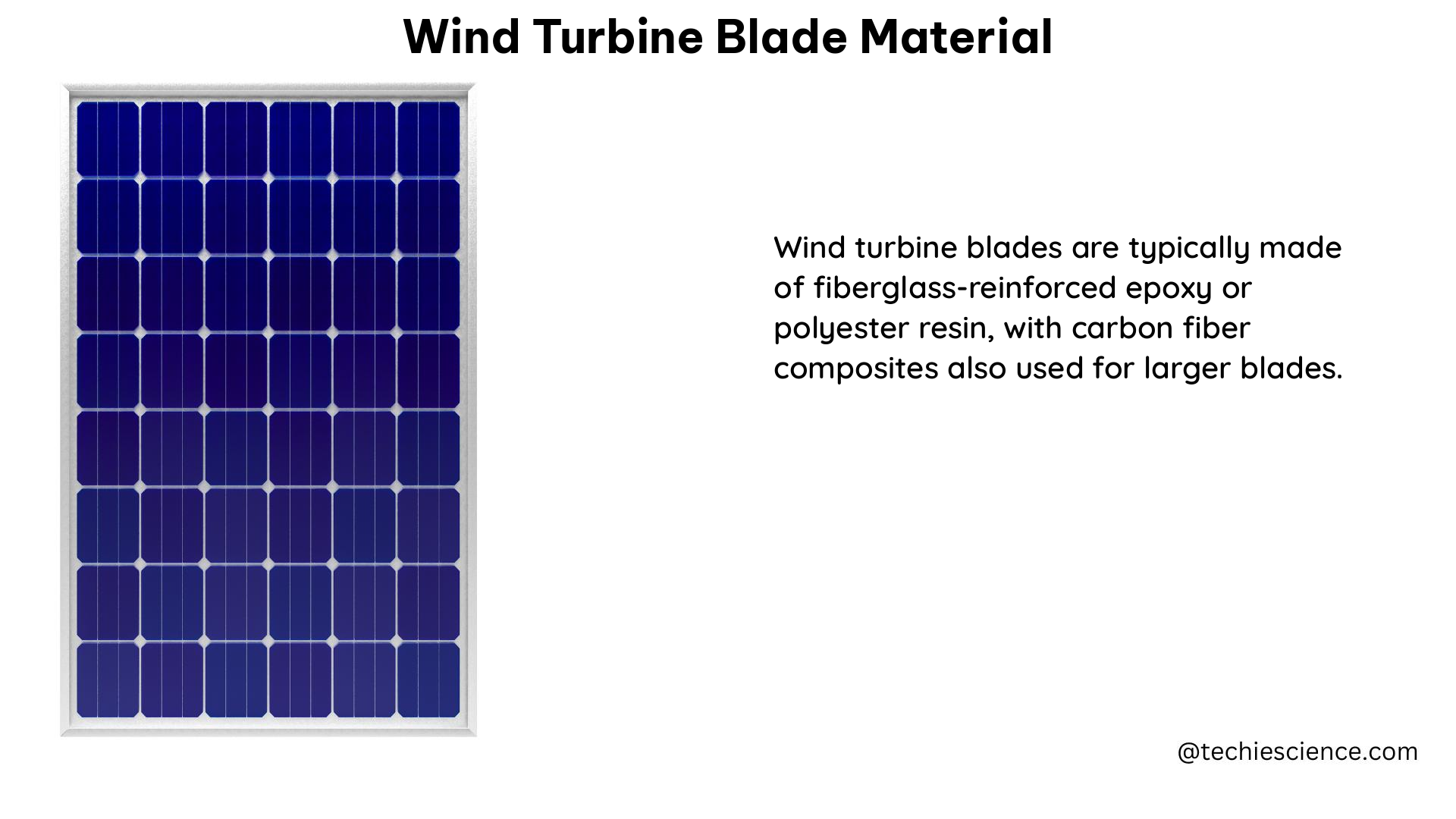Wind turbine blades are the critical components that harness the power of the wind and convert it into renewable electricity. These blades are primarily made of advanced composite materials, which provide the necessary strength, durability, and lightweight properties to withstand the demanding operating conditions of wind turbines. In this comprehensive guide, we will delve into the intricate details of wind turbine blade materials, their properties, and the latest advancements in this field.
Composite Materials: The Backbone of Wind Turbine Blades
The most common materials used in the construction of wind turbine blades are fiberglass and carbon fiber composites. These materials are chosen for their exceptional strength-to-weight ratios, corrosion resistance, and ability to withstand the fatigue loads experienced during the turbine’s operation.
Fiberglass Composites
Fiberglass composites are the most widely used material in wind turbine blades, accounting for approximately 80% of the global market. These composites are made by combining glass fibers with a polymer matrix, typically epoxy or polyester resin. Fiberglass composites offer the following advantages:
- High Strength-to-Weight Ratio: Fiberglass composites can achieve a strength-to-weight ratio of up to 30 kN·m/kg, making them an ideal choice for large-scale wind turbine blades.
- Corrosion Resistance: Fiberglass composites are highly resistant to corrosion, ensuring the long-term durability of wind turbine blades in harsh environmental conditions.
- Cost-Effectiveness: Fiberglass is a relatively inexpensive material, making it a cost-effective solution for wind turbine blade manufacturing.
Carbon Fiber Composites
While fiberglass composites are the most common, carbon fiber composites are also used in wind turbine blades, particularly in larger and more advanced models. Carbon fiber composites offer the following advantages:
- Exceptional Strength-to-Weight Ratio: Carbon fiber composites can achieve a strength-to-weight ratio of up to 50 kN·m/kg, making them even stronger and lighter than fiberglass composites.
- Improved Fatigue Life: Carbon fiber composites have a longer fatigue life, which is crucial for the demanding operating conditions of wind turbines.
- Increased Stiffness: Carbon fiber composites have a higher stiffness-to-weight ratio, allowing for the design of longer and more efficient wind turbine blades.
Blade Dimensions and Weight Prediction

The size of wind turbine blades has grown significantly over the years, with the latest models exceeding 100 meters in length, and some even reaching over 200 meters. This increase in blade size has been driven by the need for larger and more efficient wind turbines to meet the growing demand for renewable energy.
To accurately predict the weight of a wind turbine blade, researchers have developed models that calculate the median value of the respective values contained in a category of blades with similar rated power, filtering out outliers to achieve accurate results. This approach helps wind turbine manufacturers and designers optimize the blade design and ensure the structural integrity of the overall system.
Recycling and Waste Management Challenges
As the wind energy industry continues to grow, the disposal of wind turbine blades at the end of their lifespan has become a significant challenge. The composite materials used in the blades, particularly fiberglass and carbon fiber, are more challenging to recycle compared to traditional materials like steel or aluminum.
In the United States, many wind turbine blades are currently being disposed of in landfills, adding a new solid waste stream to the existing waste management system. According to estimates, the cumulative blade waste in the U.S. by 2050 is expected to reach approximately 2.2 million tons, representing approximately 1% of remaining landfill capacity by volume or 0.2% by mass.
Advancements in Data Science and Structural Health Monitoring
Researchers at Texas A&M University have explored the use of data science and environmental conditions to detect and quantify structural damages in composite wind turbine blades remotely when subjected to fatigue loads. Their findings suggest that even a 1% change in blade performance can have a significant impact over the life of a wind farm, and that measuring such small changes requires a substantial amount of data due to the inherent noise in the data.
By incorporating environmental factors, such as wind direction, air density, turbulence, wind shear, and humidity, into their data science models, the researchers were able to improve the accuracy of wind power production predictions and quantify the impact of wind turbine upgrades. This approach can help wind farm operators optimize their operations and ensure the long-term sustainability of wind energy.
Conclusion
Wind turbine blade materials are the backbone of the wind energy industry, providing the necessary strength, durability, and lightweight properties to harness the power of the wind. As the industry continues to evolve, ongoing research and development into new material technologies, recycling methods, and data-driven approaches will be crucial to making wind energy more sustainable and environmentally friendly in the long term.
References:
– https://orbit.dtu.dk/files/245841612/we.2587.pdf
– https://tees.tamu.edu/news/2018/09/yu-ding-brings-data-science-to-wind-energy.html
– https://www.osti.gov/biblio/1011223

The lambdageeks.com Core SME Team is a group of experienced subject matter experts from diverse scientific and technical fields including Physics, Chemistry, Technology,Electronics & Electrical Engineering, Automotive, Mechanical Engineering. Our team collaborates to create high-quality, well-researched articles on a wide range of science and technology topics for the lambdageeks.com website.
All Our Senior SME are having more than 7 Years of experience in the respective fields . They are either Working Industry Professionals or assocaited With different Universities. Refer Our Authors Page to get to know About our Core SMEs.